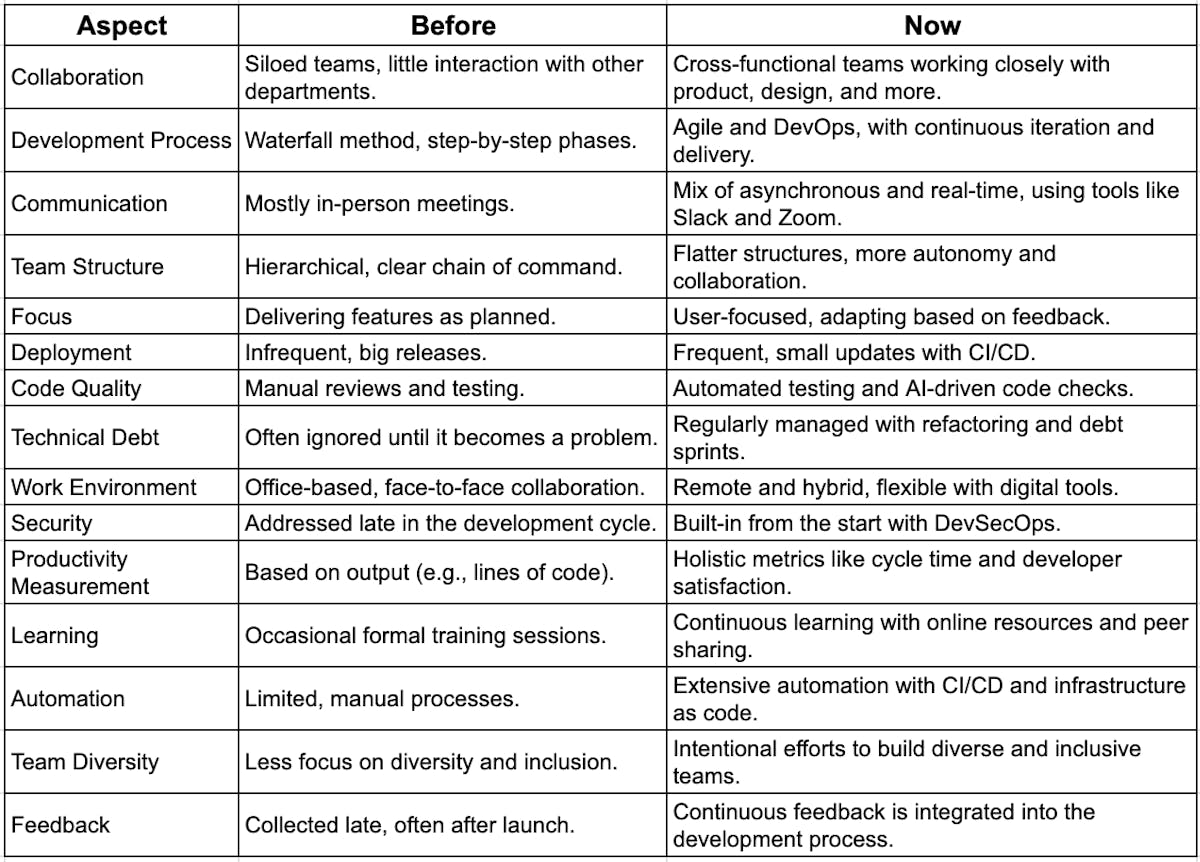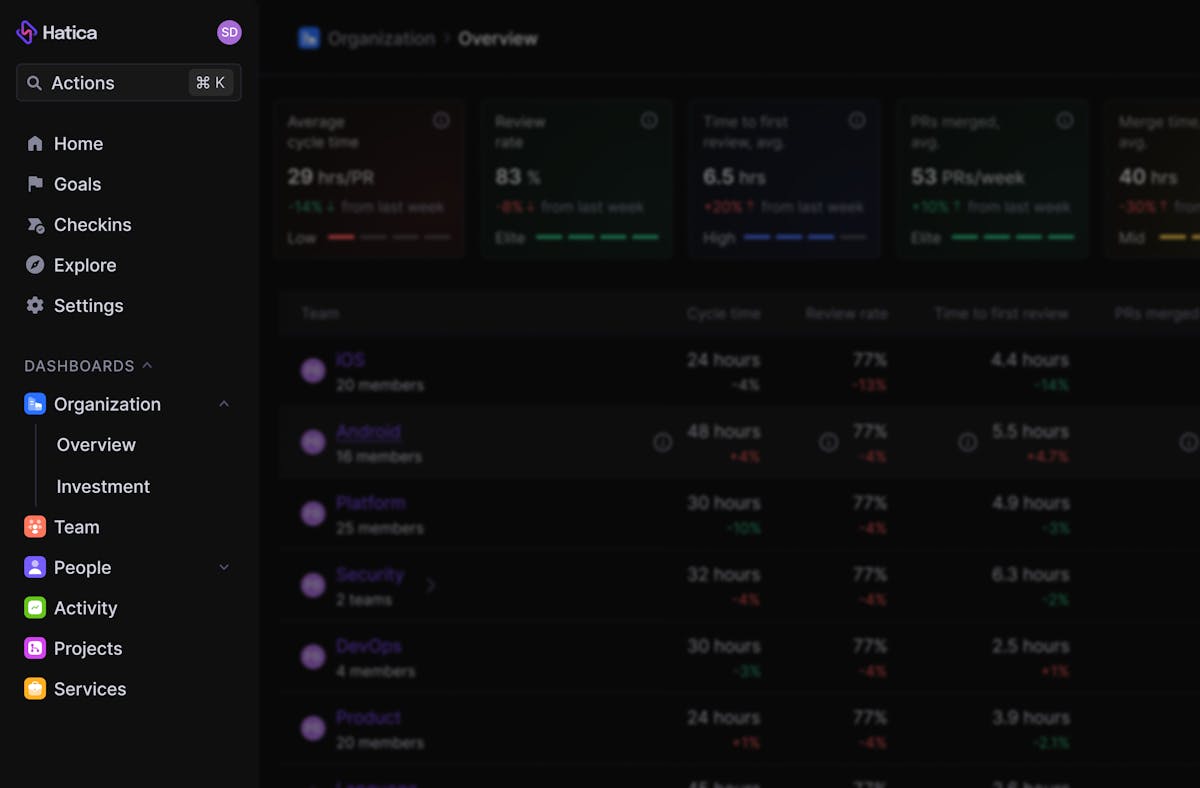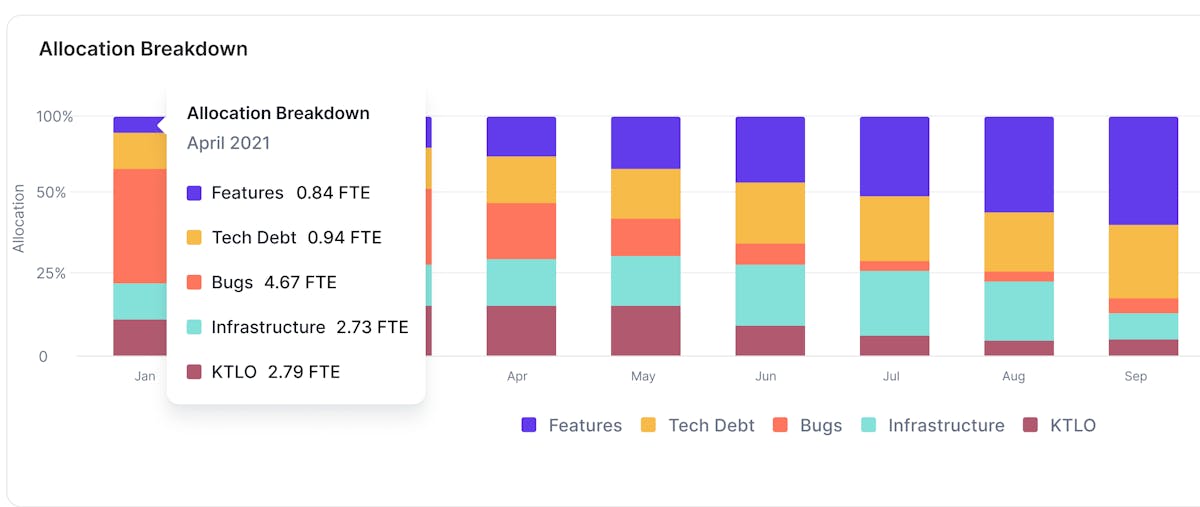Traditionally, engineering teams put technical development at the forefront, which resulted in the work, or the overall output being completed in silos. But things have changed. Today, they’re right in the mix of product development, working closely with product managers, designers, sales and marketing teams, and even customer success to make sure what they build hits the mark.
DevOps practices have shaken things up even more, blending development and operations with tools like CI/CD pipelines. And with AI and machine learning stepping in, automation is taking over routine tasks, letting engineers focus on the fun, creative parts of their work.
This shift from the old ways to the new highlights how different things are now.
So, in this blog, we’re zooming in on how engineering management platforms are keeping up with these changes and helping teams scale effectively.
Stick around to see how these platforms are making a big difference in today’s engineering world!
The Changing Scene of Engineering Management
Simply put, today’s engineering teams operate in a completely different environment compared to the past.
By the end of 2024, the global population of software developers is projected to reach 28.7 million, marking an increase of 3.2 million in just four years.
This alone should be a testament to how fast is this space changing and growing. However, to look at this transition on a granular level…






